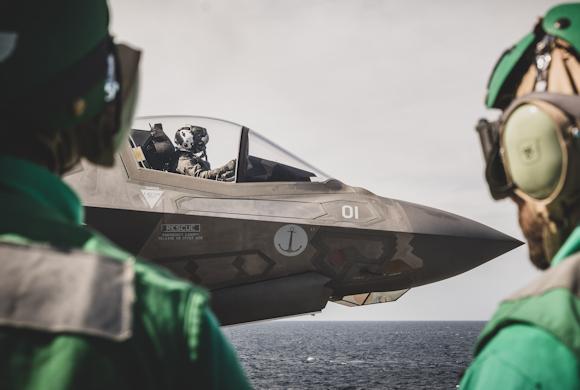In recent years, a strong competition has developed for access to marine and submarine natural resources, with consequent claims on the areas of interest.
The enormous value of maritime spaces in terms of climatic-environmental influences, energy resources, valuable raw materials, food reserves, economic activities and connectivity between continents make them, in fact, even more than in the past driver par excellence with respect to the prospects for sustainable growth and inclusive prosperity globally. This crucial function for the economic (and therefore social) well-being of states has important repercussions on contemporary international relations and on the security aspects of each nation. For this reason, the Navies have seen their own grow over time role of promoters and guarantors of safety.
In order for this task to be carried out effectively, the availability of adequate means must necessarily be accompanied by adequate preparation and training of the crews, so as to maintain high operational efficiency and act as a deterrent for those who would like to adversely affect the legitimate national interests of others.
Well aware of this, the Navy, through the command in chief of the naval squad (CINCNAV), has now consolidated its own annual training cycle, called "Open Sea". This is the main national maritime exercise which, structured over two annual sessions (spring and autumn) lasting about a month each, sees the involvement of the entire Armed Forces.

The first edition of 13 has been taking place since 2023 April, which will end on 6 May, involving the high seas and coastal areas of the Sardinian, Tyrrhenian, Adriatic, Ionian Seas and the Strait of Sicily, with multidimensional training events and feature support cyber and spatial.
As pointed out by the commander in chief of the naval team, team admiral Aurelio De Carolis, responsible for the planning, conduct and verification of the exercise, “…the Mare Aperto has reached a level of maturity that makes it a well-known and appreciated training gym, with one substantial multinational participation and solid inter-agency and inter-agency integrations, whose value is the possibility of exercising in its maximum expression both the peculiar dynamism and flexibility of the maritime command and control and the level of promptness and effectiveness of action of the individual components of our defensive maritime military instrument and their promptness and ability in merge into the enabling capacitive packages for projection onto and from the sea…”.
The training scenario, which now sees a qualifying continuity between the various editions, is structured in a series of consecutive phases. The first of these (warm up) started immediately after the pre-sail conference (13 April) and concluded on Sunday 23 April. During this phase all the participating units were involved in training events which concerned the conduct of various seafaring activities, interactions with naval vessels and personnel of the body of the Port Authorities and the development of the various forms of combat (anti-ship, anti-aircraft, anti-submarine, mine, amphibious and electronic countermeasures).
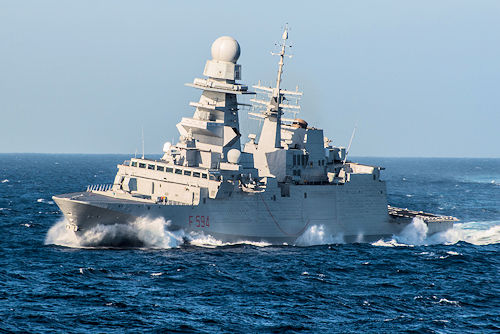
After a brief stop in various ports, the second phase began, characterized by the division of the units into two opposing groups and characterized by the use of real maritime military capabilities in operations warfare & combat, maritime security and security cooperation, in a context of growing difficulties and complexity. In this context, each of the two "parties" is called upon to dynamically fulfill its missions, in order to achieve the objectives gradually assigned by the direction of the exercise, embarked on the aircraft carrier Cavour.
Training objectives
In order to allow all components of the naval team to be trained effectively and at all levels, the planning foresees a series of events inserted in a fictitious international scenario, characterized by an international crisis with the application of the principle of collective defense (so-called "NATO article 5"), but which also takes into account the other presumable challenges that could emerge in the maritime domain, with particular attention to the management of Exclusive Economic Zone (EEZ) and to the protection of national interests in this area.
Therefore, several have been identified particularly significant training topics, such as the safeguarding of freedom of navigation along maritime lines of communication, the protection of underwater lines of energy supply and IT connection, the ability to acquire knowledge and information capillarity as well as strategic superiority in certain areas (A2/AD), the consolidation of multinational interoperability, that of inter-force integration and the construction of a systemic architecture of cooperation in the interagency field, for the contrast to illegal activities by sea and for the competition in humanitarian relief interventions. An objective, the latter, which has now become indispensable, to achieve which it is necessary to harmonize means, skills, procedures, management skills and range of action.
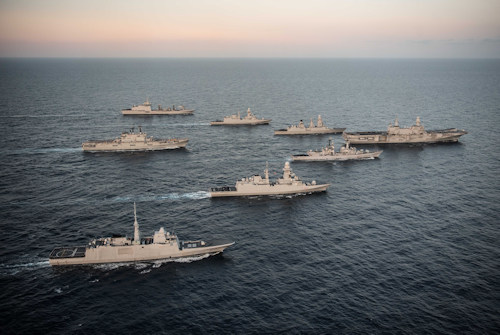
In this context, the Navy is the natural reference in the process of unavoidable coordinated integration of the different realities operating on the sea.
The objectives are, therefore, important and do not concern only the naval team and the Navy, but are inserted in a much broader context, which concerns the entire setting of the action of the State on the sea.
But why were these objectives chosen? The ability to access marine and submarine resources is acquiring increasing importance on national agendas and is at the basis of the development of tools designed to safeguard national, economic and security interests in the maritime domain. In this context, the EEZ (established in 1982 with the United Nations Convention on the Law of the Sea - UNCLOS) and the management of the resources contained therein, has a significant political and economic significance (read article "Exclusive Economic Zone and maritime power").
Furthermore, Italy and its current industrial chains are extremely dependent on foreign countries for the supply of resources and raw materials. Our country is, therefore, particularly exposed to any actions that interfere with the free accessibility of maritime trade routes. Maritime communication lines are, therefore, indispensable for our well-being. Hence the need to ensure freedom of navigation along these commercial "highways" (read article "The protection of national interests on the sea").
The damage done to the underwater gas pipeline North Stream, following the less known but equally worrying episode of the mysterious truncation which interrupted one of the two submarine communication cables of the Svalbard Undersea Cable System (between Norway and the Svalbard Islands), have also emblematically highlighted the further vulnerability that affects the maritime dimension.
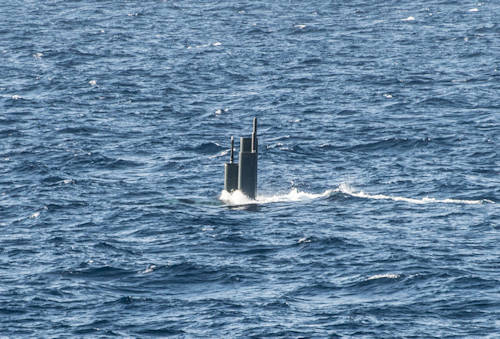
In this sense it should be emphasized that the current level of technology now makes tools for sabotage actions in the deep sea accessible even by non-state actors, such as transnational organized crime or even international terrorism.
There is therefore a huge need for providing for the security of the maritime dimension as a whole in a concrete and transversal way, with the commercial traffic lines, the various activities of the cluster maritime (fishing, yachting, etc.) and strategic infrastructures offshore, to which today are added, in fact, the submarine lines of both energy supply, essential for industrial development and to ensure our standard of living, both of digital communication, which provide links for the world Wide Web, on which the innumerable economic transactions related to international trade and finance run (read the article "Maritime spaces and international security").
So we understand how the concept of security encompasses a wide range of human activities, all of which are necessary to enable our well-being.
Furthermore, in parallel with the protection of our legitimate interests, the Navy has also developed the ability to bring aid to populations in emergency. Her modern healthcare capabilities (The Cavour is equipped, for example, with two operating theatres) and the natural ability to be able to operate for a long time independently from the infrastructures on land, allow the ships to be able to intervene both in support to populations in the event of natural disasters or humanitarian emergencies and in the logistics sector by supplying, for example, electricity to the population. All capabilities that make that the Navy has real and outstanding characteristics expeditionary which, on the occasion of complex exercises such as the "Open Sea", are further verified and refined.
The actors

In addition to the most modern naval and underwater units of the naval squadron, such as the aircraft carrier Cavour, the entire Naval Aviation also participates in the exercise, with the F-35B, the AV-8B and the embarked helicopters, the Amphibious Force, made up of the set of landing ships, amphibious vehicles and riflemen of the marine brigade Saint Mark, the underwater and raiding components of Comsubin, the Mine Countermeasures Forces, the coastal radar network and the specialized telecommunications components and cyber, which guarantee the information flow and the functions offered by the spatial domain.
In this context, the presence of the aircraft carrier adds strategic value to the exercise, as it allows to test the operational capabilities of naval groups of high value and the ability to integrate into a composite naval force. In fact, among the Navies of the world, there are few capable of operating with aircraft carrier groups, which allow the projection of power at a considerable distance from the motherland. This is a very small group of countries, including Italy, which can operate for a long time in maritime areas of national interest. It is also for this reason that the Navy takes every opportunity to carry out exercises with aircraft carrier groups of United States, France, United Kingdom, etc…. Events that make it possible to deepen the collaboration and allow for a fruitful exchange of technical-operational experiences.
Returning to Offshore, the consolidated multinational participation (13 NATO nations and 10 businesses) and the involvement in support of Army components, which integrates into the Landing Force of the Navy, the Air Force, which participates with aircraft of various types (fighters, refuelers, early warning, unmanned). For the first time, the Arma dei Carabinieri is also participating.
 Among the important novelties of this edition, some training events with the participation of the Guardia di Finanza and Civil Protection, demonstrating the delicacy and the variegated specificity of the threats present in the maritime domain. As Admiral Aurelio De Carolis pointed out, it is about “…a great teamwork, not only within the Navy but in a wider context, inter-agency and inter-agency…”. This transversal presence is, therefore, a very important signal because it bears witness to the existing synergy between the Armed Forces and between these and the rest of the actors who give life to the "country system”, for the achievement of objectives that are common and shared.
Among the important novelties of this edition, some training events with the participation of the Guardia di Finanza and Civil Protection, demonstrating the delicacy and the variegated specificity of the threats present in the maritime domain. As Admiral Aurelio De Carolis pointed out, it is about “…a great teamwork, not only within the Navy but in a wider context, inter-agency and inter-agency…”. This transversal presence is, therefore, a very important signal because it bears witness to the existing synergy between the Armed Forces and between these and the rest of the actors who give life to the "country system”, for the achievement of objectives that are common and shared.
In this context, CINCNAV plays the role of director of the exercise, while maintaining the indispensable and continuous contact with the real world, through the updating of events of geostrategic interest and the constant exchange of information with naval units located on the seas of the world, engaged in national missions or part of multinational arrangements.
The participation of all actors operating on the sea, in addition to demonstrating the achievement of high interoperability, strongly underlines the importance of all contributions for compiling a complete and updated Maritime Situational Awareness (MSA), which makes it possible to understand the evolution of the situation in the maritime areas of interest in real time and to implement the most effective actions to respond to the challenges that may arise.
An interesting novelty, which has taken hold (marine) from some editions of the "Mare Aperto", is the presence on board the main participating naval units of University students, divided into two opposing parties and selected by various faculties1 di several Italian universities2.
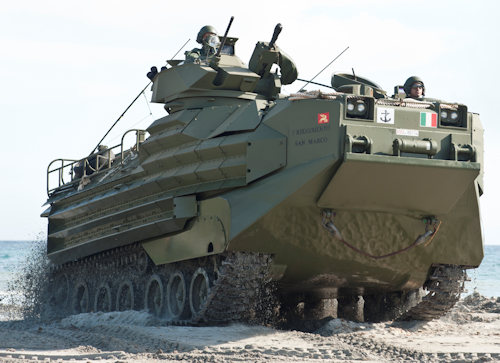 Their role in the exercise is to "draw" the evolution of the fictitious scenario from a geopolitical and legal point of view which, in this way, becomes extremely dynamic. The students also actively participate in the media exercise activity and in the training activities of information support from space and contrast cyber. An interesting combination of operational forces and the world of study, which allows one exchange of experiences and ideas, able to provide further food for thought on topics of extreme interest. Furthermore, the participation of many young university students on board also represents an opportunity for spread the culture of maritime life and deepen specific issues related to it, with the important strategic and economic implications for a country like ours.
Their role in the exercise is to "draw" the evolution of the fictitious scenario from a geopolitical and legal point of view which, in this way, becomes extremely dynamic. The students also actively participate in the media exercise activity and in the training activities of information support from space and contrast cyber. An interesting combination of operational forces and the world of study, which allows one exchange of experiences and ideas, able to provide further food for thought on topics of extreme interest. Furthermore, the participation of many young university students on board also represents an opportunity for spread the culture of maritime life and deepen specific issues related to it, with the important strategic and economic implications for a country like ours.
Finally, it should be underlined the presence on board of medical students from the University of Trieste who, during the exercise, carry out a practical internship at the health component of Nave Cavour, where they have the opportunity to get in touch with cutting-edge systems such as that for "telemedicine", an important reality that is extremely useful even in the case of interventions far from the mother country. The future doctors are then joined by the invaluable support of some volunteer nurses of the Red Cross and that of the medical officers, biologists and psychologists of the Navy in pre-shipment training, to complete the articulated range of medical-health capabilities of the naval group. A unique situation, never occurred before, which responds to requests from the military medical-health sector to carry out activities that can be carried out by optimizing what the Navy has available.
Conclusions
In a world increasingly characterized by tough competition both for access to resources and for the usability of maritime commercial lines, the maritime domain is increasingly the fulcrum of international security and the prosperity of populations. In extreme synthesis, everything that is important for the well-being of citizens passes through the sea.
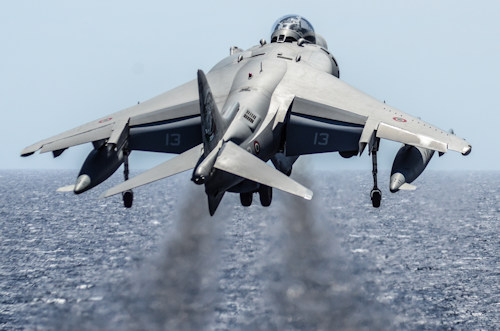 In this context, the exercises of the naval forces are a form of "insurance" for our prosperity. As Admiral De Carolis pointed out “…in an ever-changing international scenario, the purpose of these exercises is to continue training in order to be able to make our contribution to international stability and security and to be ready to effectively defend our legitimate interests against a complex of threats, growing in number, typology, complexity, mutability and interrelation weighing on a dimension, such as the maritime one, which has always been of vital and strategic importance for our nation…”.
In this context, the exercises of the naval forces are a form of "insurance" for our prosperity. As Admiral De Carolis pointed out “…in an ever-changing international scenario, the purpose of these exercises is to continue training in order to be able to make our contribution to international stability and security and to be ready to effectively defend our legitimate interests against a complex of threats, growing in number, typology, complexity, mutability and interrelation weighing on a dimension, such as the maritime one, which has always been of vital and strategic importance for our nation…”.
From the sea, on the sea, above and below the sea, therefore, because even the depths of the sea will increasingly represent a sector of significant economic and strategic interest and, therefore, a source of possible challenges to international security. The competition for access to the underwater domain therefore adds to the numerous challenges that already exist, such as the threat to freedom of navigation, one of the training themes of the "Open Sea". Any restriction in this sector (by accident or external intervention) has, in fact, a direct effect on a global level, not only in the short term but also in the medium term, as the pirate attacks and the blockade of the Suez Canal in 2021 have well demonstrated .
It should also be highlighted that the conduct of large exercises of this type, characterized by events that actually take place and with many ships actually at sea, also allow a more careful and in-depth control of the areas involved, with the intuitive positive improvements in overall safety. A very demanding job, the value of which was recognized by the Minister of Defense, Guido Crosetto who, during the exercise, made a visit on board the ship Cavour, accompanied by the Chief of Defense Staff, Admiral Giuseppe Cavo Dragone, and by the Chief of Navy Staff, Admiral Enrico Credendino.
The maritime domain, an indispensable source of wealth and growth, is increasingly an element worth protecting, in every sense, and the professionalism of the Navy crews, combined with the participation of young university students in the "Mare Aperto" allows us to observe away with confidence. But to continue navigating into the future it is imperative that there is also adequate response from politics, whose gaze must be directed with extreme and concrete attention mainly towards maritime issues in the knowledge that there is no democracy without security. An attention that passes through the knowledge of the dynamics related to the international economy, the awareness of our overall dependence on the sea and the understanding of the fundamental role played by the Navy for the protection of national interests and for the cluster Italian maritime sector as a whole.
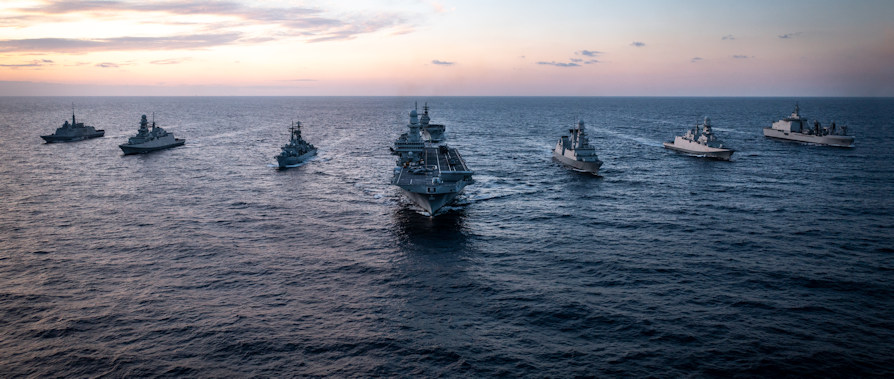
1 Political Science, Law, International and Diplomatic Relations, Communication, Naval Engineering, Geology and Geophysics, Aerospace Engineering, Management, Linguistic and cultural mediation, Government and public policy sciences
2 Various Universities of Bologna, Pisa, Siena, Trieste, Viterbo, Genoa, Naples, Bari, Rome, Milan
Photo: Marina Military

